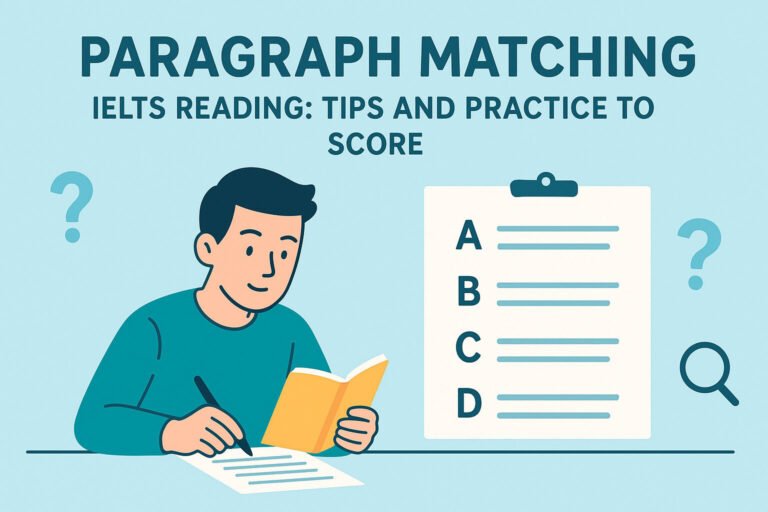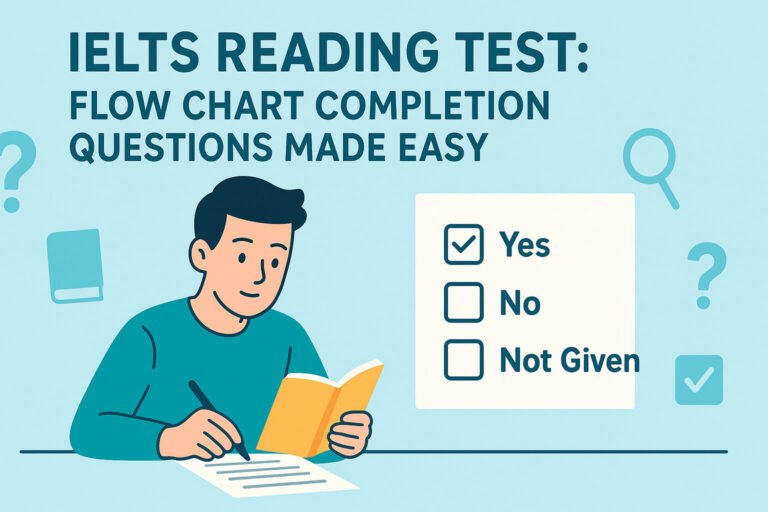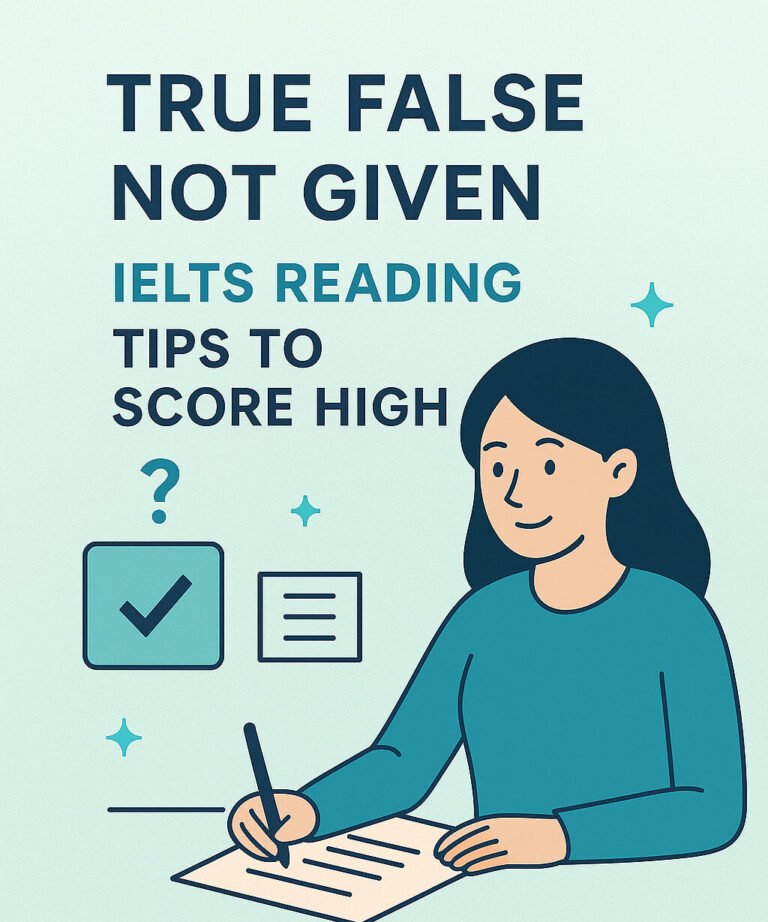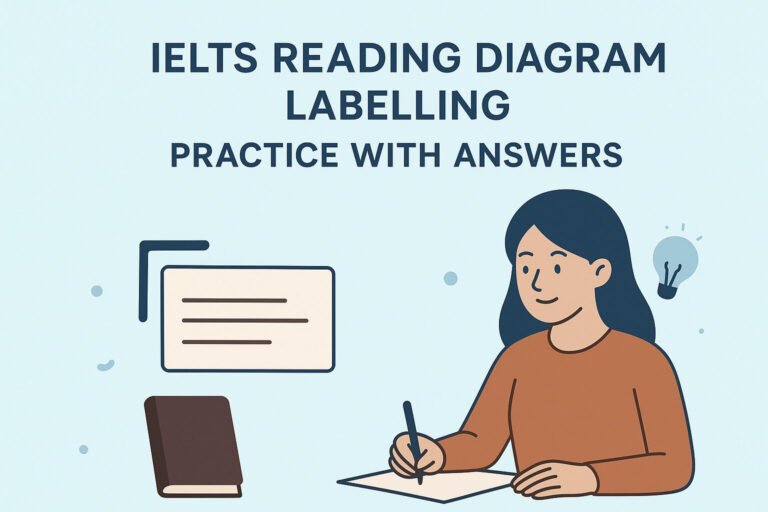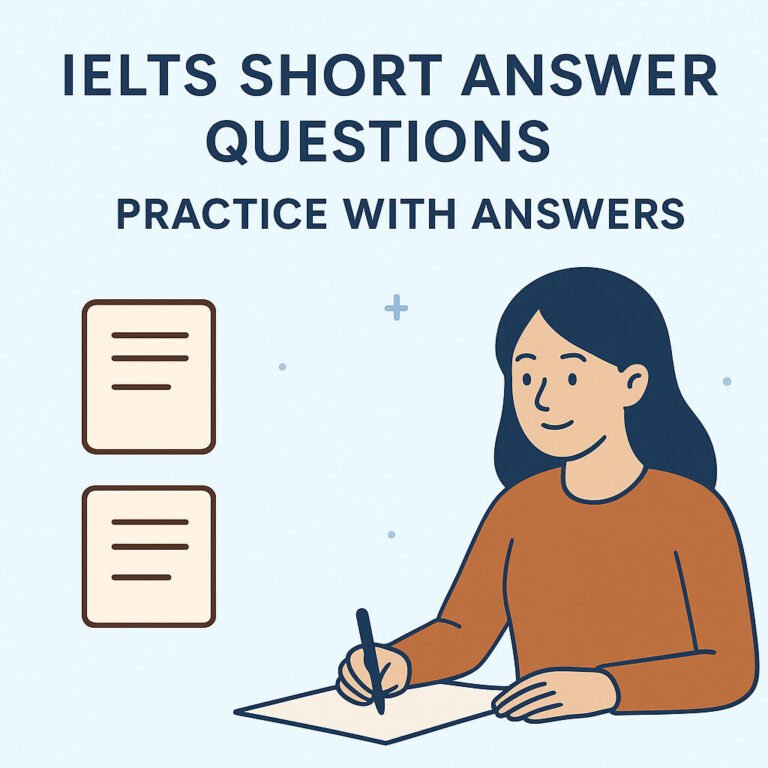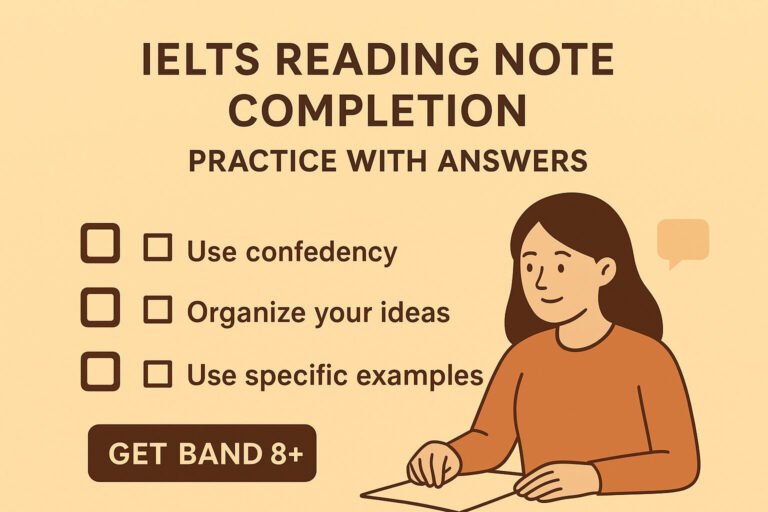Do Yes, No, Not Given questions in IELTS Reading make you second-guess yourself? You’re not alone! These questions often feel like a maze for IELTS aspirants aiming for a Band 7 or higher to study abroad. They test your ability to spot precise details, and one wrong move can cost you precious marks. But don’t worry—this guide will break down Yes No Not Given IELTS Reading Practice Lessons with clear strategies, real examples, and expert tips to help you ace them. Ready to turn these tricky questions into your strength? Let’s get started!
Why Yes, No, Not Given Questions Are Tough
Yes, No, Not Given (YNNG) questions in the IELTS Reading test ask you to determine if a statement aligns with the writer’s opinion or claims in the passage (Yes), contradicts them (No), or isn’t mentioned at all (Not Given). Here’s why they’re challenging:
Paraphrasing tricks: The passage often uses different words or phrasing, making it hard to match statements.
Subtle nuances: A slight difference in meaning can change the answer from Yes to No.
Time crunch: With 60 minutes to answer 40 questions, you need to be quick and accurate.
This blog will give you a step-by-step approach to mastering Yes No Not Given IELTS Reading Practice Lessons, with practical tips and examples to boost your confidence and score.
YNNG questions test your precision and focus. With the right strategies, you can tackle them confidently.
👉 Join Our Telegram Channel to Download IELTS Academic/General PDF and Audios
🎧 Includes all Listening Audios + Speaking Videos + Answer Explanations + Writing Samples.
What Are Yes, No, Not Given Questions?
Unlike True, False, Not Given questions, which focus on factual information, YNNG questions center on the writer’s opinions or claims. Here’s a quick breakdown:
Yes: The statement matches the writer’s opinion or claim in the passage, either directly or through paraphrasing.
No: The statement contradicts the writer’s opinion or claim.
Not Given: The statement isn’t mentioned or implied in the passage.
For example, if the passage says, “The author believes urban parks improve mental health,” and the question states, “Urban parks benefit mental well-being,” the answer is Yes. If the question says, “Urban parks harm mental health,” it’s No. If it says, “Urban parks attract tourists,” and the passage doesn’t mention tourism, it’s Not Given.
Focus on the writer’s perspective, not just facts, to choose the correct answer.
Step-by-Step Strategy for Yes, No, Not Given Questions
Here’s a clear, actionable plan to solve Yes No Not Given IELTS Reading Practice Lessons effectively:
Step 1: Skim the Passage for the Big Picture
Take 2–3 minutes to skim the passage. Focus on the introduction, conclusion, and topic sentences to grasp the writer’s main argument or opinion. This helps you locate relevant sections later.
Step 2: Analyze the Question
Underline keywords in the statement. For example, in “The writer supports free public transport,” highlight “writer,” “supports,” and “free public transport.” This guides your search in the passage.
Step 3: Scan for the Writer’s Opinion
Look for sections where the writer expresses their views, often signaled by words like “believes,” “argues,” or “suggests.” Watch for synonyms, e.g., “cost-free” for “free” or “transit” for “transport.”
Step 4: Match or Mismatch
If the statement reflects the writer’s view, choose Yes.
If it contradicts the writer’s view, choose No.
If the topic isn’t mentioned, choose Not Given.
Step 5: Don’t Assume
Avoid picking answers based on what seems logical. Stick to the passage’s content. If the writer’s opinion on a topic isn’t clear, it’s likely Not Given.
Example: Passage: “The author argues that recycling programs are essential for sustainability.”Question: “The writer believes recycling is crucial for the environment.”Answer: Yes (Paraphrased match: “essential for sustainability” = “crucial for the environment”). Question: “The writer thinks recycling is ineffective.”Answer: No (Contradicts the passage). Question: “The writer supports composting programs.”Answer: Not Given (No mention of composting).
Use a systematic approach—skim, scan, match, and stick to the passage—to avoid errors.
Common Pitfalls and How to Dodge Them
IELTS test makers design Yes No Not Given IELTS Reading Practice Lessons with traps to test your attention. Here’s how to avoid them:
Synonym Traps: The passage might say “advocates” instead of “supports.” Always look for synonymous expressions.
Partial Matches: A statement might seem correct but include a wrong detail, making it No. For example, “The writer supports free transport for students” is No if the passage only mentions free transport for all.
Not Given Mix-ups: If a statement feels plausible but isn’t in the passage, it’s Not Given. Don’t let your own knowledge sway you.
Pro Tip: Practice underlining keywords in both the passage and questions to train your eye for matches and mismatches.
Stay vigilant for synonyms, partial truths, and missing information to sidestep IELTS traps.
Practice Exercise: Yes, No, Not Given
Try this sample passage and questions to test your skills:
Passage: The writer argues that urban green spaces are vital for community well-being. They believe parks encourage physical activity and social interaction. However, they note that funding for such spaces is often limited.
Questions:
The writer believes urban green spaces improve community health.
The writer thinks parks are adequately funded.
The writer supports building more libraries.
Answers:
Yes (Matches “vital for community well-being”).
No (Contradicts “funding is often limited”).
Not Given (No mention of libraries).
Practice Tip: Find more IELTS Reading Yes No Not Given Exercises on IELTS Nest’s practice page to hone your skills.
Regular practice with real examples builds confidence in spotting the writer’s opinions.
Table: Quick Guide to Yes, No, Not Given
Option | Definition | Example Statement | Passage Information | Answer |
|---|---|---|---|---|
Yes | Matches the writer’s opinion | “The writer supports solar energy.” | “The author advocates for solar power.” | Yes |
No | Contradicts the writer’s opinion | “The writer opposes solar energy.” | “The author advocates for solar power.” | No |
Not Given | Not mentioned in the passage | “The writer supports wind energy.” | No mention of wind energy. | Not Given |
Use this table as a reference to double-check your answers during practice.
Top 5 Tips to Master Yes, No, Not Given Questions
Boost your performance in Yes No Not Given IELTS Reading Practice Lessons with these expert tips:
Expand Your Vocabulary: Learn synonyms and paraphrasing patterns, e.g., “promotes” might appear as “encourages” or “backs.”
Practice Skimming: Skim passages to identify the writer’s stance quickly, focusing on opinion-heavy sections.
Simulate Test Conditions: Time yourself (1–2 minutes per question) to build speed and accuracy.
Use Authentic Materials: Practice with official resources like Cambridge IELTS to get familiar with real test questions.
Analyze Errors: Review wrong answers to understand why you missed them and avoid repeating mistakes.
Combine these tips with consistent practice to excel in YNNG questions.
FAQ: Yes, No, Not Given Questions
How are Yes, No, Not Given different from True, False, Not Given?
YNNG questions focus on the writer’s opinions or claims, while TFNG questions focus on factual information in the passage. Always check if the statement reflects the writer’s perspective.
How can I get faster at YNNG questions?
Practice skimming for the writer’s opinion and scanning for keywords. Use IELTS Reading Yes No Not Given Exercises to improve your speed.
Are YNNG questions only in IELTS Academic?
No, both Academic and General Training modules include YNNG questions, though Academic passages are often more formal.
What if a statement seems logical but isn’t in the passage?
Choose Not Given. Only base your answer on the passage’s content, not your assumptions.
Where can I find reliable YNNG practice?
Try IELTS Reading Yes No Not Given Exercises on IELTS Nest or Cambridge IELTS books for authentic practice.
Can I skip YNNG questions if they’re too hard?
It’s better to make an educated guess than leave them blank, as there’s no penalty for wrong answers.
These FAQs clarify common doubts and guide your preparation.
Conclusion: Conquer Yes, No, Not Given with Ease
Mastering Yes No Not Given IELTS Reading Practice Lessons is all about understanding the writer’s perspective, using a clear strategy, and practicing regularly. By skimming for opinions, scanning for keywords, and avoiding traps like synonyms or assumptions, you’ll tackle these questions with confidence. The tips, examples, and exercises in this guide are your roadmap to success.
Ready to ace your IELTS Reading score? Start practicing with IELTS Reading Yes No Not Given Exercises on IELTS Nest today and take a step closer to your study abroad dreams!


